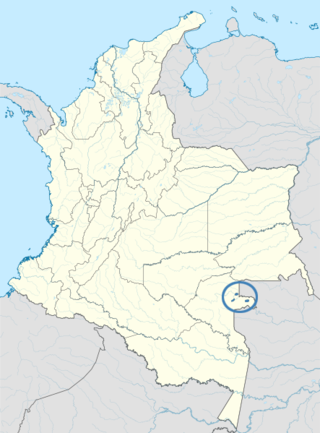Related Research Articles
Ethnologue: Languages of the World is an annual reference publication in print and online that provides statistics and other information on the living languages of the world. It is the world's most comprehensive catalogue of languages. It was first issued in 1951, and is now published by SIL International, an American evangelical Christian non-profit organization.
Velars are consonants articulated with the back part of the tongue against the soft palate, the back part of the roof of the mouth.

The South Slavic languages are one of three branches of the Slavic languages. There are approximately 30 million speakers, mainly in the Balkans. These are separated geographically from speakers of the other two Slavic branches by a belt of German, Hungarian and Romanian speakers.

Magar Kham, also known as Kham, Kham Magar, and Khamkura, is the Sino-Tibetan language variety of the Northern Magar people of Nepal. The language is situated in the upper elevations of Baglung, East Rukum, and Rolpa districts. Based on census data taken in 2011, the total population of Magar Kham is estimated to be about 69,000 speakers.

The Northern Indo-Aryan languages, also known as Pahāṛi languages, are a proposed group of Indo-Aryan languages spoken in the lower ranges of the Himalayas, from Nepal in the east, through the Indian states of Jammu and Kashmir, Uttarakhand, Himachal Pradesh and Punjab was coined by G. A. Grierson.
ISO 639-3:2007, Codes for the representation of names of languages – Part 3: Alpha-3 code for comprehensive coverage of languages, is an international standard for language codes in the ISO 639 series. It defines three-letter codes for identifying languages. The standard was published by International Organization for Standardization (ISO) on 1 February 2007.
Wutung (Udung), Musu and Nyao are dialects of a unnamed Skou language of Papua New Guinea. They are spoken in Bewani/Wutung Onei Rural LLG of Sandaun Province.
The Palawano languages are spoken in the province of Palawan in the Philippines, by the Palawano people.

The Cacua language, also known as Kakua or Kakwa, is an indigenous language spoken by a few hundred people in Colombia and Brazil. There are many monolinguals, especially children. Apart from being close to or a dialect of Nukak, its classification is uncertain.
Ambelau is an Austronesian language; in 1989, it was spoken by about 5,700 Ambelau people, of whom more than 5,000 lived on the Indonesian island Ambelau and most others in the village Wae Tawa of the nearby island Buru.
Kayeli is an extinct Austronesian language once used by the Kayeli people of the Indonesian island Buru. Two dialects were recognized, namely Leliali (Liliali) and Lumaete.
Lisela, also called Li Enyorot, is an Austronesian language; in 1989 it was spoken by about 11,900 Lisela people mostly living in the northern part of Indonesian island Buru. It is also preserved among the small Lisela community on the Ambon Island.
Pagi, or Bembi, is a Papuan language spoken by 2,000 people in five villages in Sandaun Province and in Vanimo District of Papua New Guinea, near the border with Indonesian Papua.
Rawo is a Papuan language in the Skou family, spoken on the north coast of Papua New Guinea in the vicinity of the village of Leitre (Laitre) in Bewani/Wutung Onei Rural LLG, Sandaun Province.
Shö is a Kuki-Chin language dialect cluster of Burma and Bangladesh. There are perhaps three distinct dialects, Asho (Khyang), Chinbon, and Shendu.
Spurious languages are languages that have been reported as existing in reputable works, while other research has reported that the language in question did not exist. Some spurious languages have been proven to not exist. Others have very little evidence supporting their existence, and have been dismissed in later scholarship. Others still are of uncertain existence due to limited research.

The Bengali-Assamese languages is a grouping of several languages in the eastern Indian subcontinent. This group belongs to the Eastern zone of Indo-Aryan languages. The languages in this group according to Glottolog includes Assamese, Bengali, Bishnupriya, Chakma, Chittagonian, Hajong, Kharia Thar, Kurmukar, Lodhi, Mal Paharia, Noakhali, Rajbangshi, Rohingya, Sylheti, Tangchangya and Surjapuri.

Doteli, or Dotyali is an Indo-Aryan language spoken by about 495,000 people, most of whom live in Nepal. It is a dialect of Khas, which is an ancient form of the modern Nepali language, and is written in the Devanagari script. It has official status in Nepal as per Part 1, Section 6 of the Constitution of Nepal 2072 (2015). There are four main dialects of Doteli, namely Baitadeli, Bajhangi Nepali, Darchuli and Doteli. The mutual intelligibility between these dialects is high and all dialects of Doteli are able to share language-based materials.

Rejang is an Austronesian language predominantly spoken by the Rejang people in southwestern parts of Sumatra (Bengkulu), Indonesia. There are five dialects, spread from mountainous region to the coastal region of Bengkulu, including the Musi (Musai) dialect, the Lebong dialect, the Kebanagung dialect, the Rawas (Awes) dialect, and the Pesisir dialect.
Bewani/Wutung Onei Rural LLG is a local-level government (LLG) of Sandaun Province, Papua New Guinea. Bewani languages and Skou languages are spoken in the LLG.
References
- ↑ Silzer, Peter J.; Clouse, Helja Heikkinen (1991). Index of Irian Jaya Languages 2nd edition. Jayapura: SIL & Uncen. p. 73.
- ↑ Marmion, Douglas E. (2010), Topics in the Phonology and Morphology of Wutung (PDF), Canberra: Australian National University, p. 20, archived from the original (PDF) on 2019-04-15